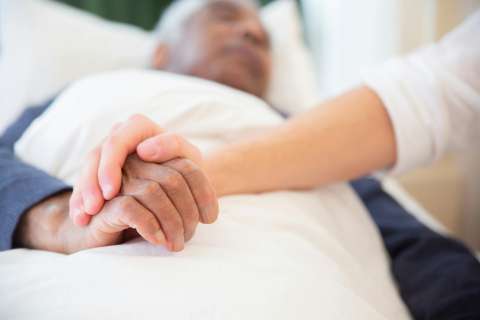It sounded like an unusual idea: coupons for kidneys.
However, Jeffrey Veale, MD, a kidney transplant specialist at UCLA Health, was intrigued.
A 64-year-old man wanted to donate a kidney to his 4-year-old grandson, who had chronic kidney disease but wouldn’t need a transplant for many years. The grandfather wondered if he could donate now, while he was healthy, and give his grandson a kind of “credit” to receive a kidney in the future.
Thus, the Kidney Voucher Program was born. Established at UCLA Health in 2014, the program has since expanded to 103 other transplant centers across the country and is supported by the National Kidney Registry.
More than 1,160 kidneys have been donated to date under the long-term family voucher program. Dr. Veale and his colleagues published a 2021 study in the journal JAMA Surgery looking at the first 250 voucher donors. Six vouchers were redeemed and a total of 573 kidney transplants were performed at participating medical centers during the study period.
A donation chain
Here’s how the program works: A person wants to donate a kidney to a loved one, such as grandfather to grandson. The loved one, however, doesn’t yet need a transplant, or isn’t a match. The donor gives the organ anyway, making it available to someone in immediate need, and the loved one receives a voucher redeemable for a kidney in the future.
This starts a donation chain, Dr. Veale explains. Someone awaiting a kidney will receive the newly available organ, allowing someone else who needs a kidney to move up on the deceased-donor waiting list.
“It takes one kidney and makes it into two, kind of,” Dr. Veale says.
More than 92,000 people were awaiting kidney transplants in the U.S. as of April 2025, according to the American Kidney Fund. Of the more than 27,000 kidney transplants performed in 2024, 7,030 came from living donors, according to the U.S. Health Resources and Services Administration.
Donations from family members
Most participants in the voucher program are family members of people with chronic kidney conditions, Dr. Veale says – many of them parents or grandparents. His study found that donors ranged in age from 19 to 78, with a median age of 46.
Parents and grandparents often donate a kidney as a “legacy” for their loved ones, Dr. Veale says. Because the vouchers are good for life, a grandchild could benefit from a grandparent’s donation even after the grandparent’s death. Vouchers are non-transferable and may only be redeemed by the designated recipient.
In the previous example, just as the grandfather’s donated kidney benefits a stranger, the grandchild’s voucher entitles them to a stranger’s donated kidney should the need arise.
This is what happened for recent transplant recipient Everett Verigan, whose wait time for a kidney was dramatically shortened when his cousin donated an organ on his behalf. Instead of spending a decade on the waiting list, Verigan was able to get a kidney within a few years.
“People don’t understand how big of a deal this voucher program is,” says his wife, Catrina Verigan.
A voucher recipient, however, may never end up needing a kidney, which means the original donation just increased the pool of available organs. UCLA Health’s inaugural kidney voucher recipient is now 14 and hasn’t needed a transplant yet.
“It’s like you’re growing kidneys on trees,” Dr. Veale says. “It’s incredible.”
He says “UCLA had a lot of guts” being the first medical center to embrace the voucher concept. It’s been gaining support ever since, Dr. Veale says, describing the program as “the biggest innovation in kidney transplants in the last 20 years.”




